Over $50 billion will be spent on our pets in the United States this year. Of that, $20 billion will pay for food, and over $14 billion will be spent on veterinary care. The pet insurance industry is a money-making monster; growing at a rate of 25% each year and projected to be $664 million by 2012. (In 2006, when I wrote my first book that number was only $88 million). According to my holistic veterinarian, a shocking 50% of dogs over two years old will contract cancer as well. So with all that we know, why are our pets becoming sicker each year?
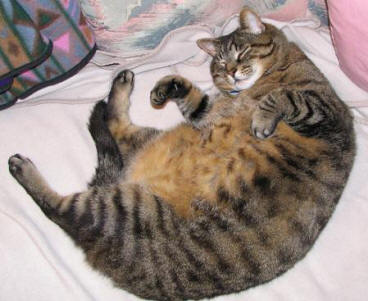 Obesity is on the rise for humans as it is with pets. Of the 77 million dogs in this country, a mind blowing 35 million are considered overweight, and 6.7 million are clinically obese. Cats too, are packing on the pounds and of the 86 million household pets, a whopping 6.4% of them have been deemed morbidly obese, as well. So who or what is to blame for the downfall of the ones we love so much?
Obesity is on the rise for humans as it is with pets. Of the 77 million dogs in this country, a mind blowing 35 million are considered overweight, and 6.7 million are clinically obese. Cats too, are packing on the pounds and of the 86 million household pets, a whopping 6.4% of them have been deemed morbidly obese, as well. So who or what is to blame for the downfall of the ones we love so much?
I do not believe the problem stems from overfeeding. The crisis simply begins with the quality of food we are giving them. After all, commercial pet foods all have that same common denominator; they are loaded with non-essential and inexpensive fillers like corn, wheat, potatoes, starches and rice. Coupled with that, chemical preservatives are all too often hidden behind the unscrupulous manufacturing practices of the pet food makers, and meat by-products may not be meat at all. Many of them contain high-calorie corn syrup (which cannot be synthesized by the liver), and other sugar derivatives as well as bloat-causing fatty flavor enhancers like beef tallow and even bacon grease! Without these often addictive flavor additives, most pets would never even eat their food. It is no wonder their weights are escalating in epidemic proportions, as they are for their human caregivers too. See the correlation? I have always compared a typical commercial pet food to junk food or potato chips and beer diets we have seen so many people succumb to. Sure you may be able to live on it, but not very well and not very long. If we want our pets to have glowing, great health and see the vet just one time a year, we need to feed our pets the same type of wholesome, real, natural, balanced meals we ideally want for ourselves.
 Pets make us all feel better. They help lower our blood pressure, reduce stress, prevent heart disease by providing psychological stability and fight depression. So what can we do to help our pets live healthier too? For starters, my mantra for the last 25 years has been…
Pets make us all feel better. They help lower our blood pressure, reduce stress, prevent heart disease by providing psychological stability and fight depression. So what can we do to help our pets live healthier too? For starters, my mantra for the last 25 years has been…
If I couldn’t eat it myself, I’d never give it to my pets.” – Andi Brown
Over the last two decades, it appears there have been many upgrades to the pet food industry. We have seen the emergence of the Raw Food Diets, the Holistic foods, the Natural brands, the Chubs, Grain Free; all of them canned, kibbled, baked or even freeze-dried. They all bear the label “complete and balanced”, but sadly it seems that not all that much has really changed beyond how those products are marketed. Just because a product falls under the “premium” category, or it’s labeled “all natural”, and is found in a boutique pet store, does not necessarily make it much better than its close cousin (often perceived as inferior) on the shelves of grocery stores and mass food merchandisers. I know you do not want to hear it, but the food you “love to love” might not be so healthy after all. Sadly, it seems like everyone got on the bandwagon when “holistic” came into vogue, but are all those products really what they claim to be?
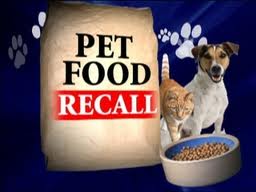 Life sure pitched us some curve balls over the years. Consider the 2007 pet food nightmare: Menu Pet Foods recalled more than 100 brands including Iams, Eukanuba, Hill’s Science Diet, Purina, Mighty Dog, as well as many of the Holistic and natural brands you may even be using right now! These products were all pulled off store shelves because some of the ingredients were found to be killing our cherished dogs and cats. Thousands of pets were sickened (the FDA received more than 17,000 reports) and an estimated 20% of them died from acute renal failure caused by tainted food. Unfortunately, time makes us forget, and I know there are a lot of people affected by those awful products who have actually gone back to those very same brands because we were told it was now safe to return to the feed bag. Complacency can hurt us, and yet many still seem to turn a blind eye. As recently as last month, I received an update from my Vet’s office; warning about even more products that are still posing dangers. Let’s face it; most companies do not have the well-being of our best friends at heart, which is why it’s so important to take the path of homemade foods very seriously. We owe it to our pets to love them with wisdom.
Life sure pitched us some curve balls over the years. Consider the 2007 pet food nightmare: Menu Pet Foods recalled more than 100 brands including Iams, Eukanuba, Hill’s Science Diet, Purina, Mighty Dog, as well as many of the Holistic and natural brands you may even be using right now! These products were all pulled off store shelves because some of the ingredients were found to be killing our cherished dogs and cats. Thousands of pets were sickened (the FDA received more than 17,000 reports) and an estimated 20% of them died from acute renal failure caused by tainted food. Unfortunately, time makes us forget, and I know there are a lot of people affected by those awful products who have actually gone back to those very same brands because we were told it was now safe to return to the feed bag. Complacency can hurt us, and yet many still seem to turn a blind eye. As recently as last month, I received an update from my Vet’s office; warning about even more products that are still posing dangers. Let’s face it; most companies do not have the well-being of our best friends at heart, which is why it’s so important to take the path of homemade foods very seriously. We owe it to our pets to love them with wisdom.
Once you focus on the healing power of food, it's easy to understand why so many of our pets on commercial foods are still suffering with skin problems, allergies, infestations, organ failure, diabetes, obesity and cancers. We've let our guard down and have forgotten that Food is The Foundation of Life.
Don’t let your pet become a statistic of veterinary medical care. Don’t you have better things to do with your money? With wholesome, healthy, natural, balanced ingredients, we can help them achieve the greatest health care goals.
Find out how to make my Whole Pet Diet Chicken or Turkey Stews, . It’s called Doc’s Stew! There’s never been a better choice for your dogs or cats. Learn more about this incredibly healthy diet. There’s so much you can do for the life of the ones you love – right now!

Make Every Day A Holiday with Healthier Pets!
Xox
Andi Brown & “Doc” Holiday



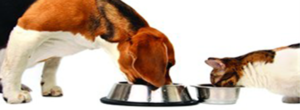
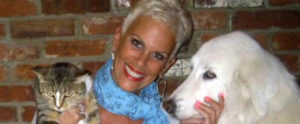
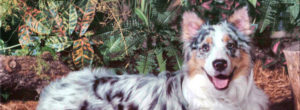
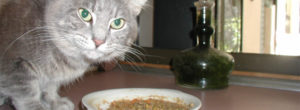
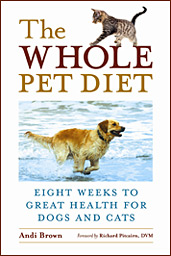
One Response
I cannot thank you enough for what you do. After I researched enough to know that grocery store food is not what I want to feed to my cats, I began purchasing the higher priced brands found in pet food boutiques. But the more I researched and read, the more I could see from the ingredient lists that these brands ALWAYS contained at least one ingredient, and usually MANY, that I knew should not be in cat food. But what to do? Now I am grateful at every feeding that I received your email and bought your food.